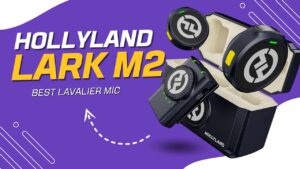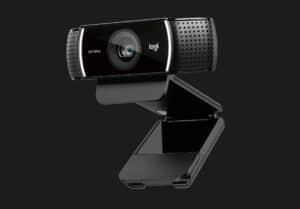The Shure SM7B is one of the most popular microphones in podcasting. In fact, it’s one of the most popular microphones in the entire entertainment industry. It’s the product of decades of acoustic development and sound research by the serious audiophiles at Shure.
Whether you’re looking for a podcasting mic, a streaming mic, performing voiceover work, or just something quality for all of those Zoom meetings, the SM7B is a solid choice. It offers a polished and professional sound at a reasonable price point, making it an attractive buy for new and veteran podcasters.
In this Shure SM7B review, we break down this popular podcasting microphone. We explain its benefits, a few drawbacks, and help you decide whether it’s right for you.
Castos is a participant in the Amazon Services LLC Associates Program. We may earn commissions from your purchases on Amazon.com, though at no cost to you.
Tip
We break down everything you need for podcasting in our guide on the best podcasting equipment.
Finding the Right Mic
Before we dive into our Shure SM7B review, we’d like you to keep in mind that every microphone reacts differently to everyone’s voices. Finding the perfect mic is finding the perfect glove or finding the perfect shoe. Some don’t fit, some kind of fit, but the one that fits perfectly may not be the one you expect.
This means it’s important to try as many mics as possible until you find the one that’s right for your voice. If you’re going to invest hundreds of dollars into a mic, we recommend buying several, testing them out, and then returning the ones that don’t suit your voice.
Shure SM7B Design
The Shure SM7B comes from the same line as the well-respected Shure SM57. In 1973, Shure engineers were tasked with improving the SM57’s cartridge. The result was the SM7, which was later upgraded to the SM7B and released in 2001.
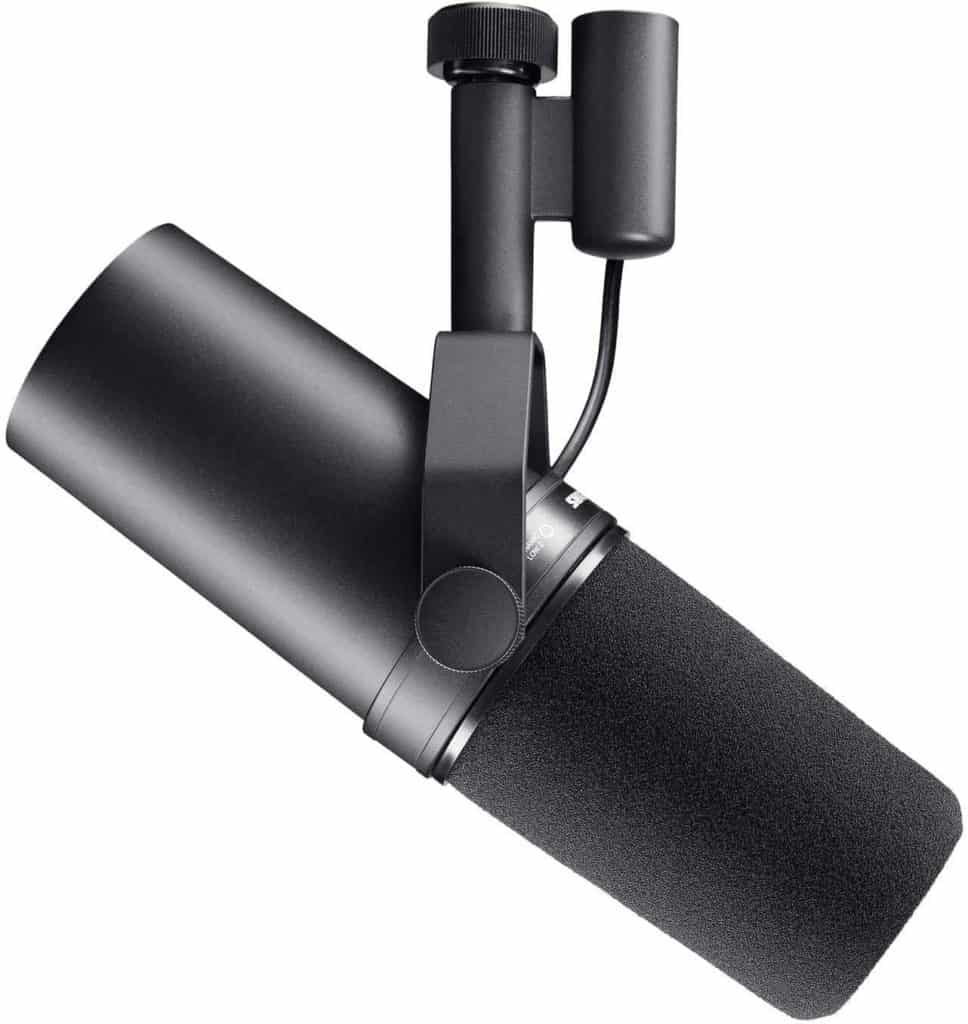
The SM7B sports a dense and chunky, but sleek design. The enamel aluminum and steel housing feels sturdy in your hands; certainly not fragile. It hangs from an integrated yoke with a three-pin XLR jack and a threaded nut for mounting. The back of the microphone offers some control buttons, including two switches for toggling between low-frequency roll-off, mid-frequency boost, and fully flat response.
The housing includes some useful features that keep the capsule acoustically isolated and make the SM7B so clear and reliable:
- Shielding from electromagnetic hum
- Vibration isolator
- Air-suspension shock mount
- Metal grill to protect the capsule from impact
- Double windscreen
The SM7B’s durability is one of our favorite parts of its design. You are going to drop your mic at some point (but without the flair of a sick burn). If you’re going to spend nearly $400 on a piece of equipment, you want it to hold up during accidents without affecting its functionality.
Grow Your Audience with Castos
Try Castos for free for 14 days. See how it helps you create great content and connect with your listeners.
Action
Read to start your own podcast? Learn the nitty-gritty details of starting your own show in our comprehensive guide. Learn how to start a podcast.
SM7B’s Key Features
Shure’s goal was to create a quality microphone that everyone can use, which means you don’t need to be an audio engineer to get great sound out of it. It produces accurate audio on a consistent basis by capturing the entire audible spectrum from 20 Hz up to 20,000 Hz, making it a good choice for most vocals and music.
Two big reasons as to why the SM7B is a top choice for vocals are the two EQ switches on the backside of the device. These help shape the mic’s sound. The low-cut switch is a filter that affects the spectrum around 400 Hz. The mid-boost switch creates a lifted response from about 900 Hz to 11,000 Hz. These are useful tools to clean up rumble from resonant sources. You should experiment with both to see how they affect your sound.
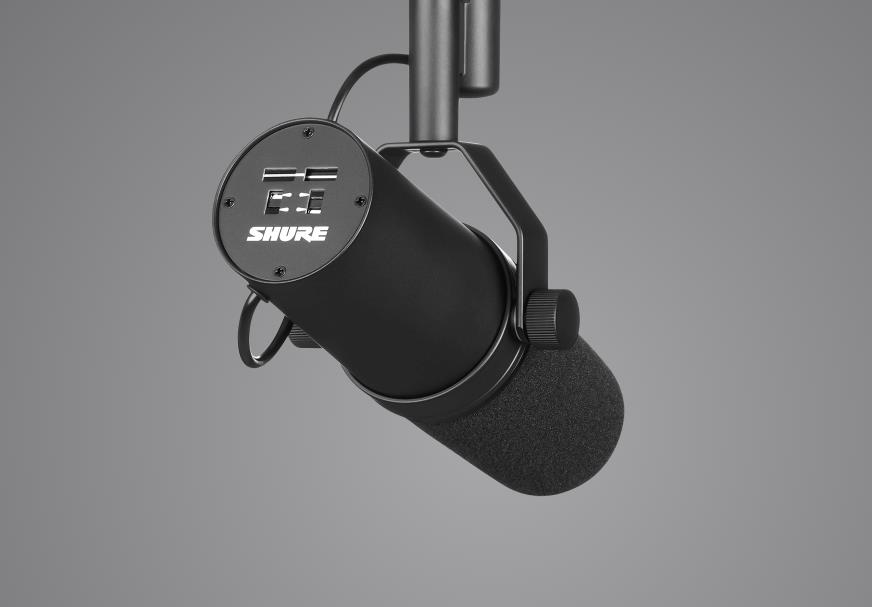
(Keep in mind that these switches will alter the sound picked up by your recording software. You won’t be able to “unfilter” them at a later point. So make sure you’re happy with their configuration before you start your recordings.)
Another feature we like is the sturdy double windscreen. “Screen” may be a poor word, because the SM7B uses dense foam blacks to inhibit plosives and other air bursts. You can remove them if you want, like if you’re recording instruments that don’t push air. But if you’re podcasting, leave them on.
Using the Shure SM7B
The Shure SM7B interfaces with most audio equipment using a standard XLR cable. New podcasters should be aware that this mic won’t plug into your computer via USB. You need an audio interface between the mic and your computer. Our favorites are the Focusrite Scarlett 18i8 USB Audio Interface or the Focusrite Scarlett 2i2 3rd Gen USB Audio Interface. If you’re willing to spend some cash, you can’t go wrong with the Rode RODECaster Pro Podcast Production Studio.
Compared to other microphones, the SM7B is power hungry. It requires more clean gain to deliver a usable audio signal than most mics. If you’re using underpowered preamps, the signal will be quiet or possibly noisy. In this case, you’ll also need a gain booster, such as the Cloud Microphones Cloudlifter CL-1 Mic Activator.
Setting up the SM7B is fast and simple. The captured threaded nut secures to your boom arm or mic stand quickly and securely. The XLR output is easily accessible. You don’t need a separate mounting clip, which is especially helpful.
When it comes to using this microphone, it’s critically important that you secure it with a microphone stand or a boom arm. This is not a mic you can hold in your hand. Any motion at all can jiggle the XLR output and create electrical noises or popping in your recording. This makes handheld use impossible.
The SM7B’s Sound
Our Shure SM7B review wouldn’t be complete without a discussion about the microphone’s sound. Unlike many condenser mics that use delicate and thin membranes, the SM7B uses a thicker coil to respond to sounds. It’s more durable and less sensitive than you would expect from a condenser mic. The result is a warm, smooth, and rich sound without harshness.
That said, the SM7B can get a bit muddy in the middle towns. If your voice falls within this range, we recommend playing with the EQ switches on the back of the microphone to find the right configuration for your voice.
In regards to the pickup pattern, the Shure SM7B is a dynamic mic with a cardioid polar (heart-shaped) pattern. This means it can record sound from the front and sides of the device. This pattern makes it less sensitive to loud noises compared to condenser mics, thereby minimizing audio clipping and signal distortion from sudden bursts of sound.
This is what a cardioid pattern looks like. Imagine the mic in the center and you sitting at 0 degrees. The mic will catch everything within the dark black line.
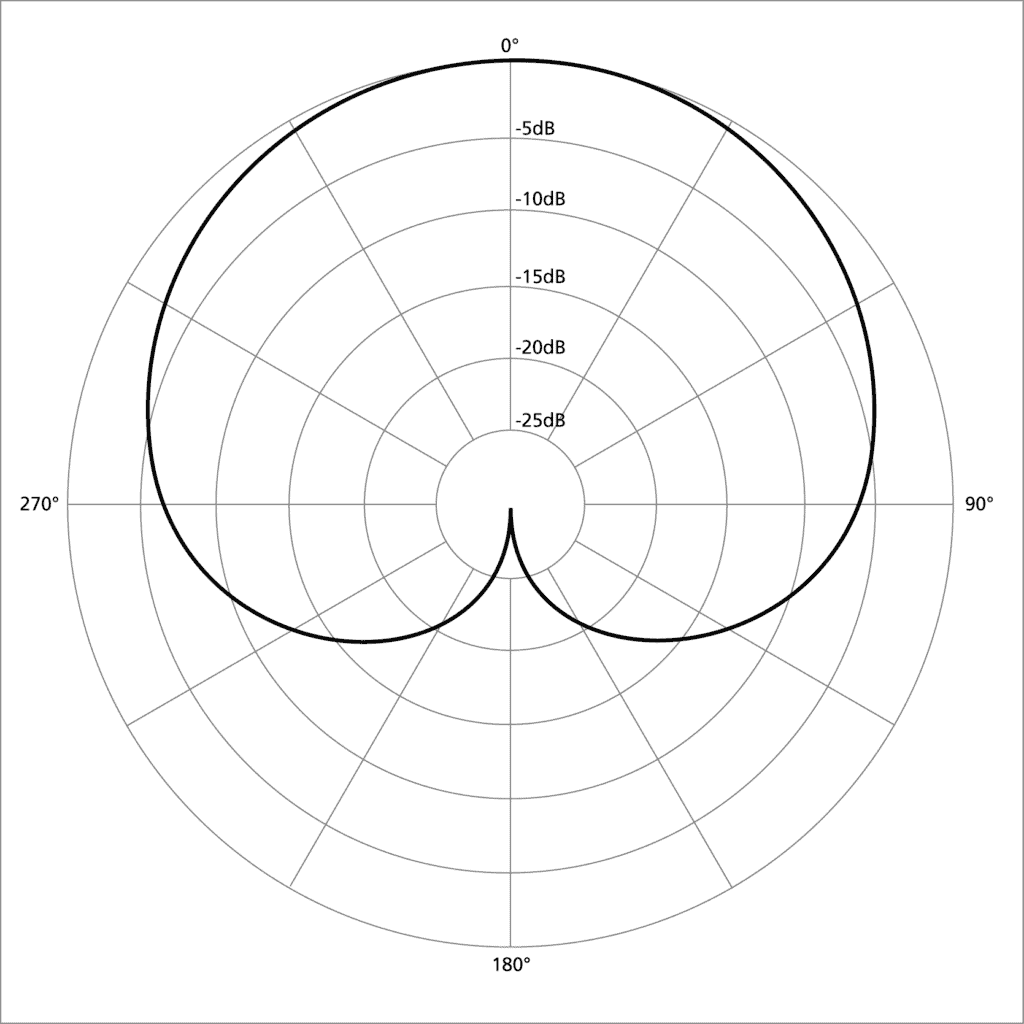
A cardioid pickup pattern means you can’t place the microphone in the center of the room and expect it to capture everything. It will only capture sound that’s in front or slightly off to the side. You must place it directly in front of your mouth. Anything off-axis gets ignored. It’s not a good microphone to record multiple people, unless you are basically sitting on top of each other. But if you tend to record in places with background noise, you can angle the mic away from those sources to keep your recording clean.
Should You Buy the Shure SM7B?
Whether you’re new to podcasting or a veteran, the Shure SM7B is a solid choice. It’s durable, versatile, and consistent. It has a well-earned reputation of quality and reliability. There’s a massive community of audio enthusiasts and most of them have experience with this mic. Most importantly, the SM7B is affordable. At $399, it usually falls within the budgets of most serious podcasters.
All in all, we strongly recommend the SM7B to all podcasters and have given it a space on our podcast gear recommendation list (which is what prompted this Shure SM7B review in the first place).
If you aren’t ready to spend the money on an SM7B, or if you prefer to interface via USB, consider buying the SM7B’s little brother: The Shure MV7 ($249). It’s a compact microphone that’s better for carrying around. It’s quite useful if you find yourself podcasting in different locations or if you regularly take your mic back-and-forth from your home and studio.
With the MV7, you can record both XLR and USB outputs simultaneously. This lets you preserve a high-resolution audio file from the XLR output and a lower version from the USB output. Depending on the final product, you may choose to go with the lower resolution version to save space on your host. (Unless you use Castos, of course, in which case you get unlimited storage.)
That said, the audio quality isn’t the same as the SM7B. The MV7 isn’t a condenser mic, so it may fall flat on detailed sources. However, you won’t be disappointed. The vocals are clear and the ShurePlus MOTIV desktop app makes the microphone easy to control. It offers several presets if you prefer not to mess with the customization settings.
If you want something even more budget friendly, we recommend the Audio Technica ART2100x ($99). This dynamic mic is perfect for beginners. It offers more forgiveness for imperfect recording and has a solid depth of voice at this price. It can be connected with XLR cables or USB depending on your setup.
a legendary dynamic moving-coil microphone that’s ideal for close-proximity instrumental and vocal use in recording and broadcast studios. The product of several decades of acoustic development and research, this Shure microphone delivers a flat, smooth frequency response packed into a durable casing. Between its dynamic range and smooth, extended frequency response, the SM7B delivers a polished and professional sound in almost any room—why it’s so well-known in the broadcasting world.
Shure SM7B Review: Bottom Line
Here are our final thoughts for this Shure SM7B review: This mic is a well-constructed microphone based on decades of audio experience and built for reliability and clear recordings. The materials and yoke mounting system are durable and easy to use. There’s no need for an additional pop filter because it’s already included. The sound is rich and smooth. The mic is adept at ignoring anything that isn’t your voice. All in all, we think this is a superb microphone for new and veteran podcasters.
Grab the Shure SM7B on Amazon.
Action
Need more podcasting gear recommendations? Check out our list of the best podcasting equipment.
